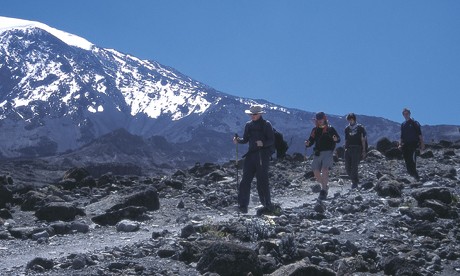
Many are attracted to the mountains, but at what point is altitude sickness a risk? And is there a sure way to avoid it?
The effects of thin air are apparent before they become hazardous, and that perhaps explains why people worry about it when they need not. Acute mountain sickness (AMS) is undoubtedly dangerous but serious problems are most unlikely below altitudes of 2,000m. That said, people can and do get into trouble when ascending rapidly to modest altitudes by cable car, train or car, especially children, the elderly or those with lung or heart conditions.
Travellers arriving at significant altitude by plane (as you can in La Paz, Lhasa, Leh, Denver, Mexico City or Quito, for example) must be sure to acclimatise before venturing even higher.
For most, though, symptoms don’t usually start in earnest until around 3,000m. The hotel built in the Everest region, where Japanese tourists were helicoptered in and oxygen was provided in the rooms, was closed because so many people became ill there.
Mountain sickness strikes unexpectedly and unpredictably. Ascending once without problems does not guarantee future problem-free climbs – altitude is no respecter of age, gender or fitness. AMS comes in a variety of guises; few symptoms are unique to AMS and many of the early signs are not obviously different from fatigue or reactions to strenuous exercise and the cold.
Many trekkers will notice some ankle swelling a few days into their trip. In itself, this is not significant (though it makes the feet tired and heavy). However, this indicates that the body’s capacity to control fluid balance is somewhat awry.
Strangely, it is not lack of oxygen that is the problem. At altitude the body fails to recognise that the rate of breathing needs to be increased in order to clear CO2 from the blood. In excess, CO2 upsets the body’s acid-alkali balance, which in turn leads to fluids accumulating in the wrong places. Pulmonary oedema is when fluid collects in the lungs, which contributes to breathlessness and, ultimately respiratory failure. Fluid can also build up within the skull, causing the earliest sign of cerebral oedema – headaches.
You can help avoid AMS by knowing what altitudes you are likely to reach and ascending at a sensible pace. This means taking several days to reach 3,000m and then climbing no more than a further 300m a day, sleeping low if you can.
This regime works for most people but is not infallible and trekkers must always be on the lookout for symptoms of AMS. Cerebral oedema clouds judgment and makes people argumentative. Since it leads on to drowsiness and then coma and death, it is crucial to recognise the signs early while the victim is still capable of walking down to safety. Although there are drugs to treat AMS, these are used to get the victim fit enough to descend – descent is the only real treatment. Going down just 500m can be enough to save someone’s life.
Certain ascents (eg Kilimanjaro) make it difficult or impossible to follow the sensible ascent guidelines. In this case expect trouble, be prepared to descend, take enough fluids to produce three good-volume urinations a day (dehydration is common at high altitude and contributes to symptoms) and consider taking acetazolamide.
Fortunately most of us who stray up to 3,000m will only experience a bit of breathlessness and mild brain swelling. This tends to cause headaches and insomnia.
It can be worth taking Diamox (acetazolamide) to speed acclimatisation and avoid these symptoms. It also preserves the ability to think at altitude – crucial when in an environment that addles the brain, but when judgement affects safety.
Diamox is well tested for use in AMS but is unlicenced for this indication so some doctors are wary of prescribing it and may not know the dose. To buy it in the UK you’ll need a private prescription, or some travel clinics sell it.
Otherwise it is available over the counter at some destinations. It is a sustained-release 250mg capsule taken each morning for just five days, starting two days before ascent. Alternatively you can take a larger dose (750mg or 1,000mg) all at once when you get the high-altitude headache. It cures the pain in two hours and keeps you feeling fit during the next several days of acclimatisation.
Dr Jane Wilson-Howarth lived in Nepal for six years. Her latest book A Glimpse of Eternal Snows is published by Murdoch.